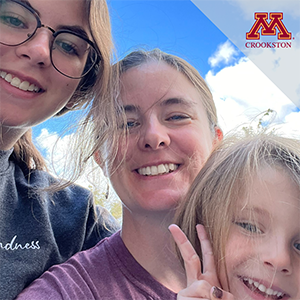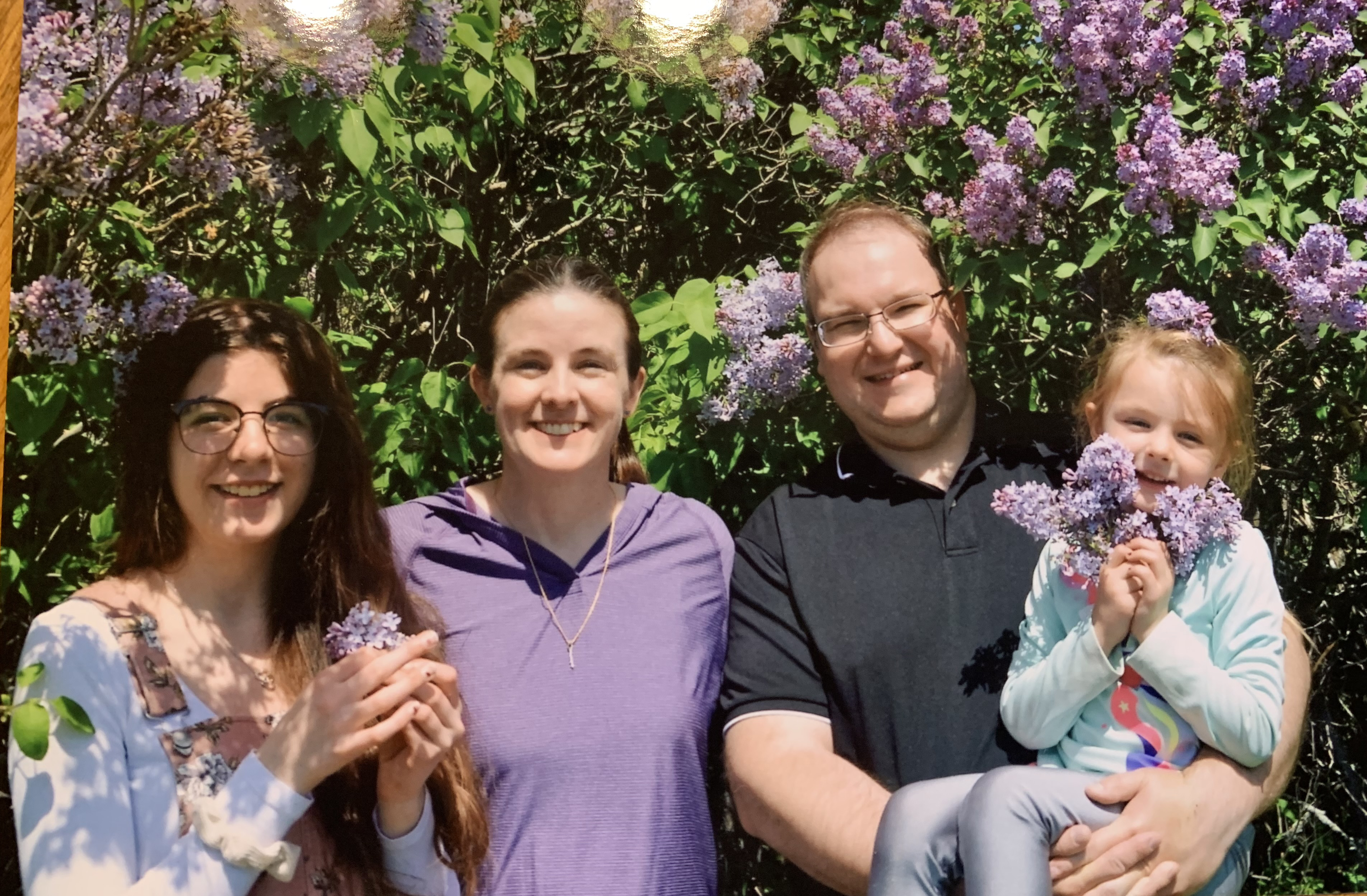

University of Minnesota Crookston associate professor of biology and environmental science, and director of sustainability Katy Chapman would be considered both a faculty and staff member with her many titles, but at home she’s a mom, wife, gardener, animal lover, knitter, and beekeeper. At work, Chapman is currently taking time to achieve a career goal of becoming a full professor and she’s knee-deep in research on multiple topics.
Chapman lived in California until the sixth grade when her family moved to Jamestown, N.D., where her parents still live today. She attended Jamestown High School and the University of North Dakota receiving a bachelor’s degree in biology with a chemistry minor. From there, she went on to receive a graduate teaching certificate and her Ph.D. in environmental soil science from Purdue University . Chapman did post-doctoral work at the University of Massachusetts Amherst then post-doctoral work for the United States Department of Agriculture. She’s married to TJ Chapman, who is a lecturer and music director at UMN Crookston. They have a daughter, Faith, who is five-years-old and in kindergarten, and she has a daughter, Grace, with her late husband, William “Bill” Clayton Smith, who also worked for UMN Crookston.

How did Chapman land at the University of Minnesota Crookston? It was either Minnesota or Texas when she applied for jobs, and being closer to family won out.
“I originally applied for the soils position here and Dan Svedarsky told me to apply for the biologist position,” Chapman explained. “I was hired and asked to start an environmental science program with different disciplines.”

“I’ve always been interested in environment and sustainability, so when Dan was going to retire, and I was floored he was going to retire, I looked into the sustainability position,” she added.
Chapman says for the near future she would like to see the environmental science program grow and hopes the sustainability minor takes off, as she feels every student could benefit from and see the impact sustainability has globally.
Another part of her work day is continuing research work on a few projects she’s started with Albert Sims, retired director of operations for the Northwest Research and Outreach Center, Kristie Walker, associate professor and interim division head for agriculture and natural resources, and associate professor Lindsay Pease. One project involves greenhouse gas emissions from soils and looking into different fertilizer sources and yields to show protein and sugar content; another is about turf grass, its fertilizer sources, irrigation practices, shade vs. no shade on grass and maintaining grass quality. Chapman has also been studying rain on plots, soil health, and the effects of poultry litter. On top of all that, she participated in a farmer’s market project this summer with Sharon Stewart, associate professor and department chair, lecturer Lacey Anderson, TJ Chapman, and UMN Extension program associate Megan Hruby, where they researched access to healthy foods, barriers people are experiencing, and what could be done to remove some of those barriers.
When she’s not busy at work, she’s a “busy bee” at home tending to their honey bees, growing their pollinator garden and produce garden, and taking care of kids, dogs, and chickens. Chapman’s father was a commercial beekeeper and has since retired, and her mother and brother own Buffalo City Bees and sell honey and candle wax. Katy and TJ started a hive last year and it was taken down by a bear, so this year they started two hives.

“I learned a lot of how to do that from my dad and this year we got seven gallons of honey from our bees,” she explained. “For a beginning hive, it’s an okay amount. The honey we got has a unique flavor and I was told that might be due to how close it is to our fruit orchard.”
(Chapman’s fruit orchard contains raspberries, juneberries, apples, plums, cherries, strawberries, honey berries, and grapes.)
Chapman became pretty involved with beekeeping through the summer and even shared a video of how she checked her bees for mites. The process includes taking a large sample of bees, placing them in a jar, adding powdered sugar into the jar through the top screen, and shaking the jar. Then, you let the jar sit for 10 minutes and shake the powdered sugar out. That’s when you check for mites.
“If you find more than a couple mites per 100 bees, you have to treat them,” Chapman shared.
Now, Chapman’s bees are insulated and cozied up for the winter with enough honey to get through the cold season.
Chapman has been recognized by UMN Crookston many times with the 2020 Distinguished Faculty Service Award, 2017 Distinguished Scholar Award, C. Eugene Allen Award for Innovative International Initiatives (III Award) from the Global Programs and Strategy Alliance at the University of Minnesota, and 2011 Outstanding Service-Learning Faculty Award, plus she’s been honored with a variety of scholarships, awards, and recognitions throughout her personal and professional career. She has been recognized for a number of publications in Journal of Environmental Quality, Botany Research Journal, and Ecological Engineering, to name a few.


